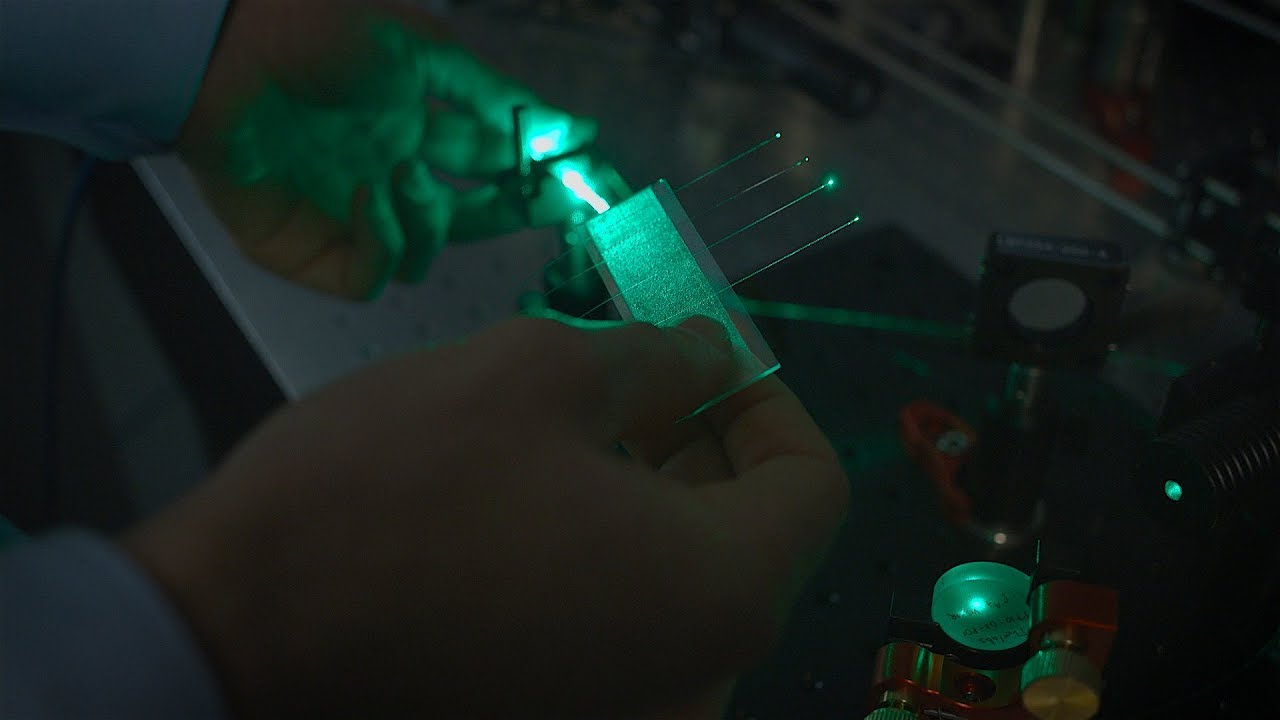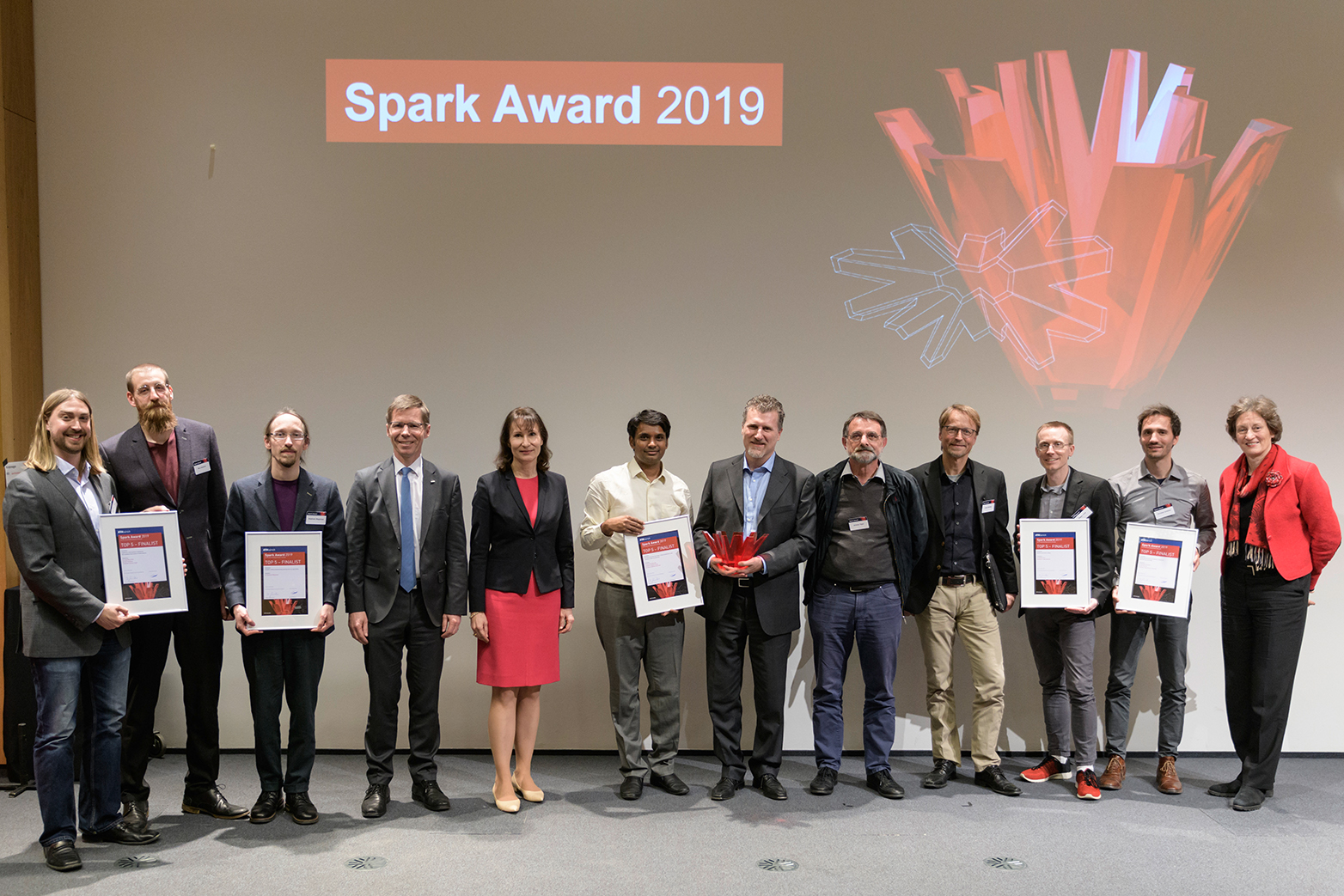An award-winning water filter
Raffaele Mezzenga, Sreenath Bolisetty and Qingrui Zhang have been awarded the Spark Award 2019 for their filter, which removes harmful fluoride from drinking water. Their invention gives people all over the world access to clean drinking water.
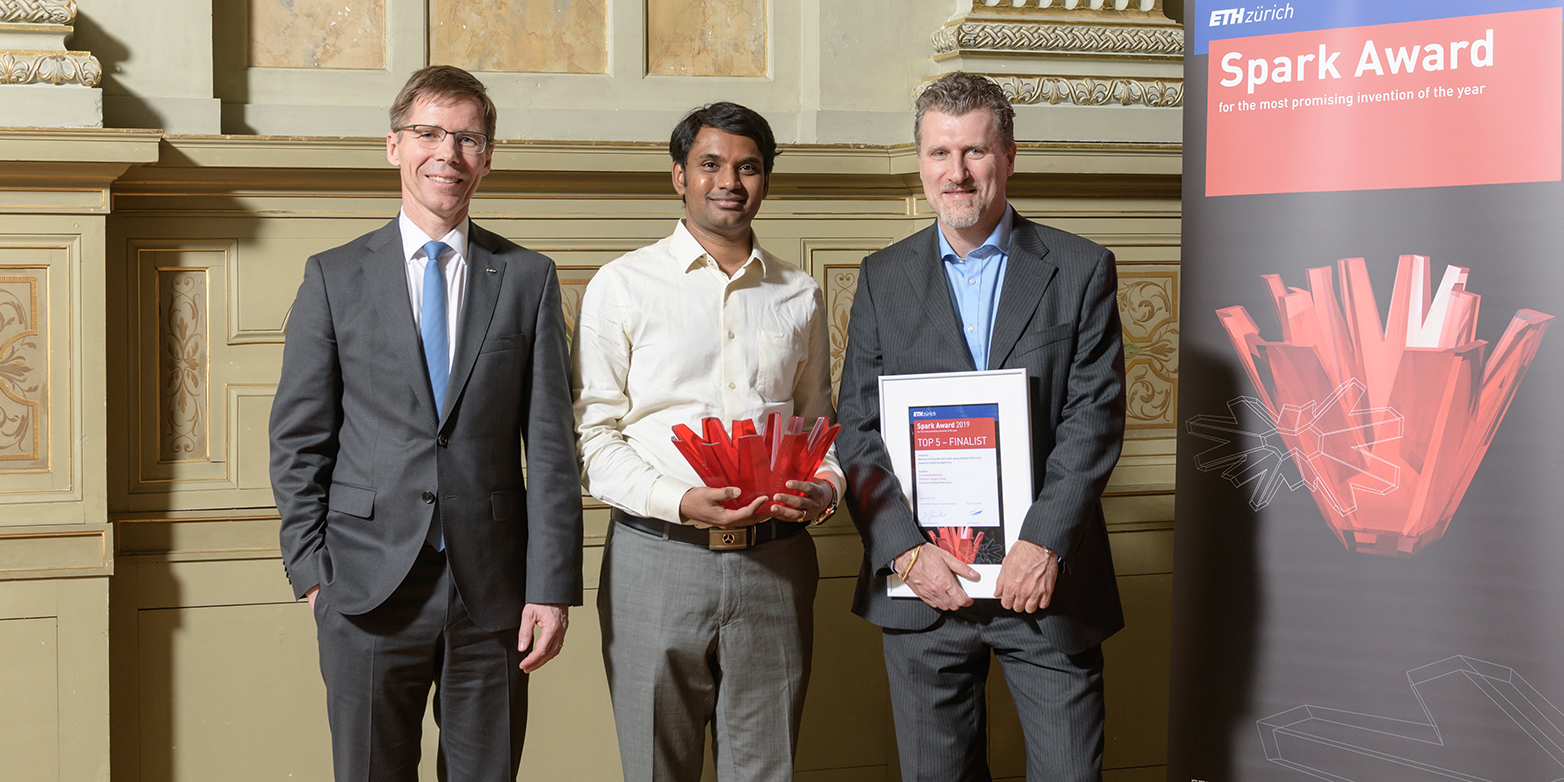
Their idea paid off: Raffaele Mezzenga, Sreenath Bolisetty and Qingrui Zhang, a visiting scholar at ETH from July 2017 to June 2018, received the Spark Award 2019 last night. Four years ago, Mezzenga, professor at the Institute for Food Science, and Bolisetty were among the finalists for the innovation prize awarded by ETH Zurich. This year, they finally succeeded: the jury chose their filter, which removes harmful fluoride from drinking water, as the winner. “Their invention is both highly beneficial to society and economically viable,” ETH President Joël Mesot praised the invention during the award ceremony at the Audimax, which was attended by about 200 guests.
An invention with global benefits
Drinking water with a high fluoride content is found in many regions all over the world, and areas with volcanic soil are especially affected. While a small amount of fluoride can prevent tooth decay, higher concentrations can cause fluorosis, which leads to hardening of the teeth and bones, or in the worst case to fluoride poisoning. The charcoal filter developed by the group of researchers is an affordable solution that can give people all over the world access to safe water. Mezzenga explained: “The filter is the result of a project during which we developed a technology to remove heavy metals from drinking water. A year and a half ago, the city of Rome became aware of our project and asked us if our technology could remove fluoride, too.” The idea of a fluoride filter was born. Bolisetty, who leads the ETH spin-off external pageBluAct Technologiescall_made in addition to his academic work, is currently preparing the market launch of the product.
Innovation is key
The number of innovative inventions coming from ETH Zurich has been at a consistently high level for many years. Last year yielded 224 inventions and 109 patent applications. It was also a record year for start-ups at ETH, Joël Mesot reported, with 27 launched. The Spark Award has often provided an initial impetus to researchers to start their own company.
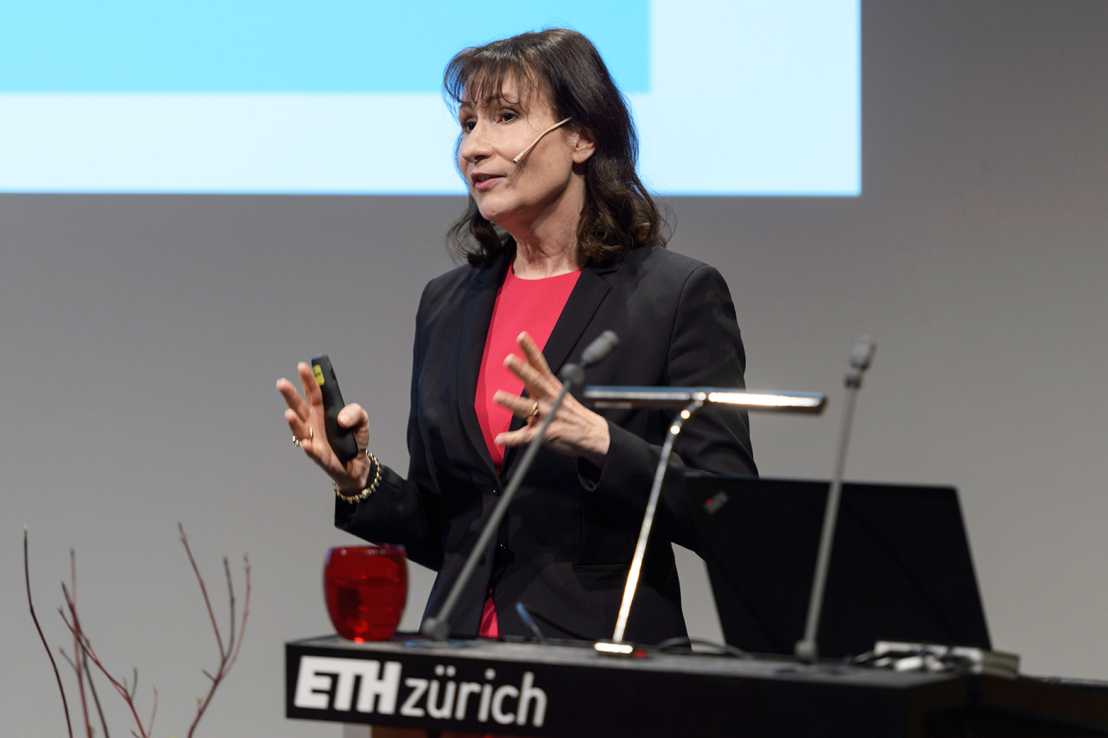
Guest speaker Suzanne Thoma, CEO of BKW, emphasised the importance of innovation and invention. The ETH alumna talked about the transformational process that BKW underwent in the highly conservative energy sector. She described the transition from a regional energy supplier to an international infrastructure corporation. According to her, staying abreast or even ahead of market developments is key: “Excellence and skill are decisive in our increasingly complex world.”
Stefan Heuss proved that innovation can also be creative and entertaining. Known as the inventor of bizarre machines, the TV personality provided light-hearted entertainment by presenting exaggerated everyday innovations—a tuned pushchair, a tie with an inbuilt drinks holder and so on.
The winning project
Filtering fluoride out of drinking water: excessive amounts are harmful to health. In some cases, fluoride contamination is man-made, but the substance also occurs naturally. Concentrations are particularly high in regions with volcanic activity. Raffaele Mezzenga, Sreenath Bolisetty and Qingrui Zhang have developed a charcoal filter from whey protein and atoxic zirconium oxide nanoparticles that removes fluoride from drinking water efficiently and economically.
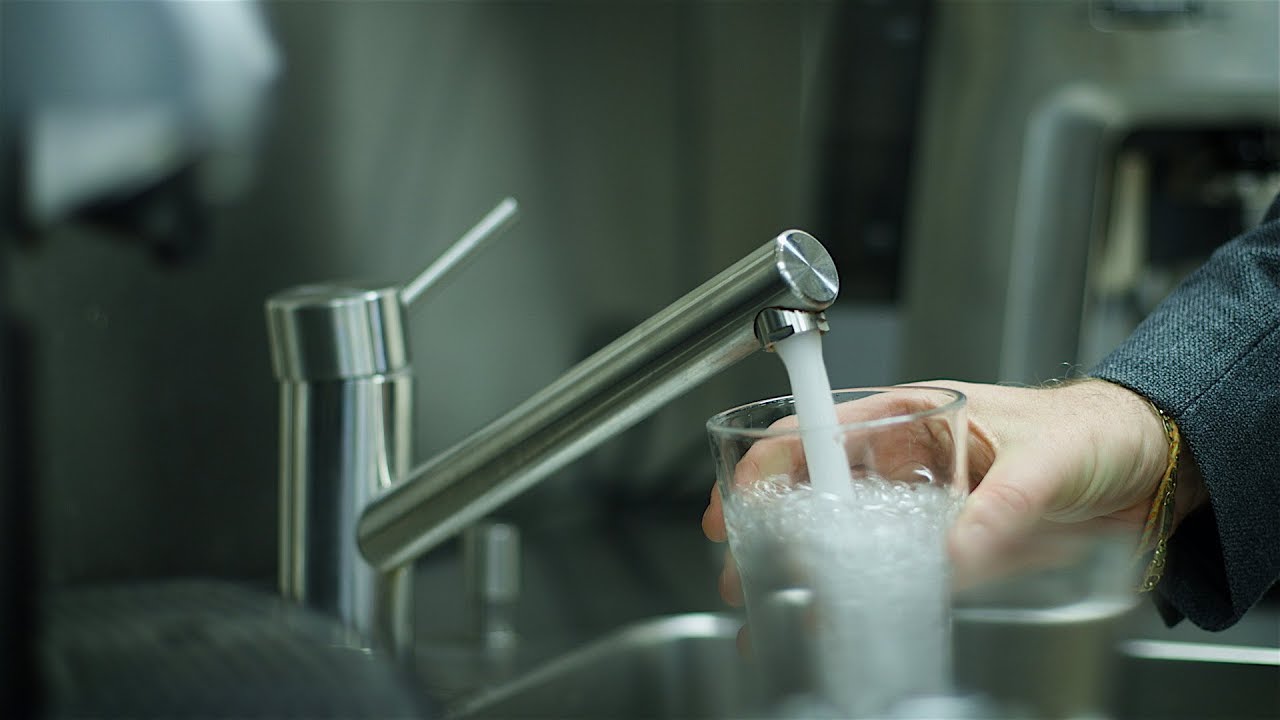
The other finalists
Digital zip models: a “zippable” is a piece of fabric that is easily assembled into a 3D object using a single zip at the edges. Zippables can be used as toys, fashion accessories or complex covers and cases. Olga Sorkine-Hornung, Roi Poranne and Christian Schüller have developed an algorithm that calculates patterns for any hollow 3D structure from a flat material.
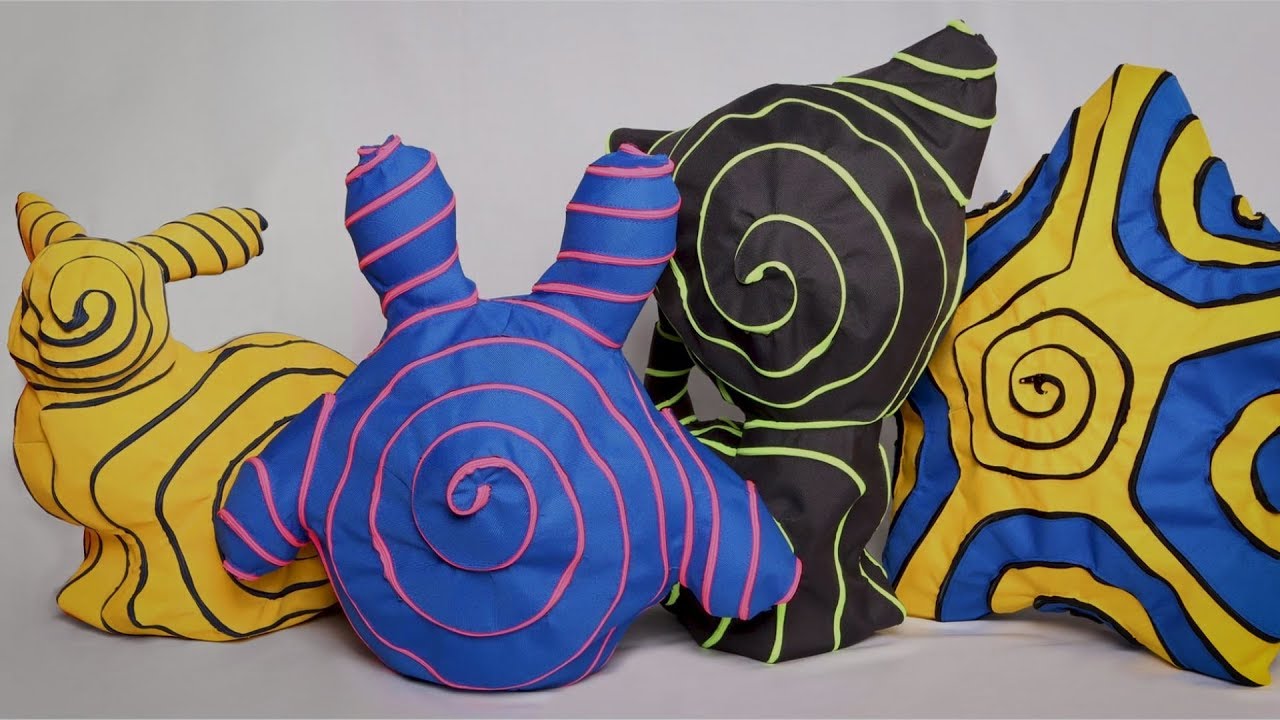
Game development as child’s play: Stéphane Magnenat has developed a tablet app that allows lay people to program and design their own games. Using the tablet camera, the amateur designers can scan objects, place them in the game and animate them. The intuitive user interface also makes it easy to program the game’s rules. The app is intended as a learning tool for users without technical knowledge.
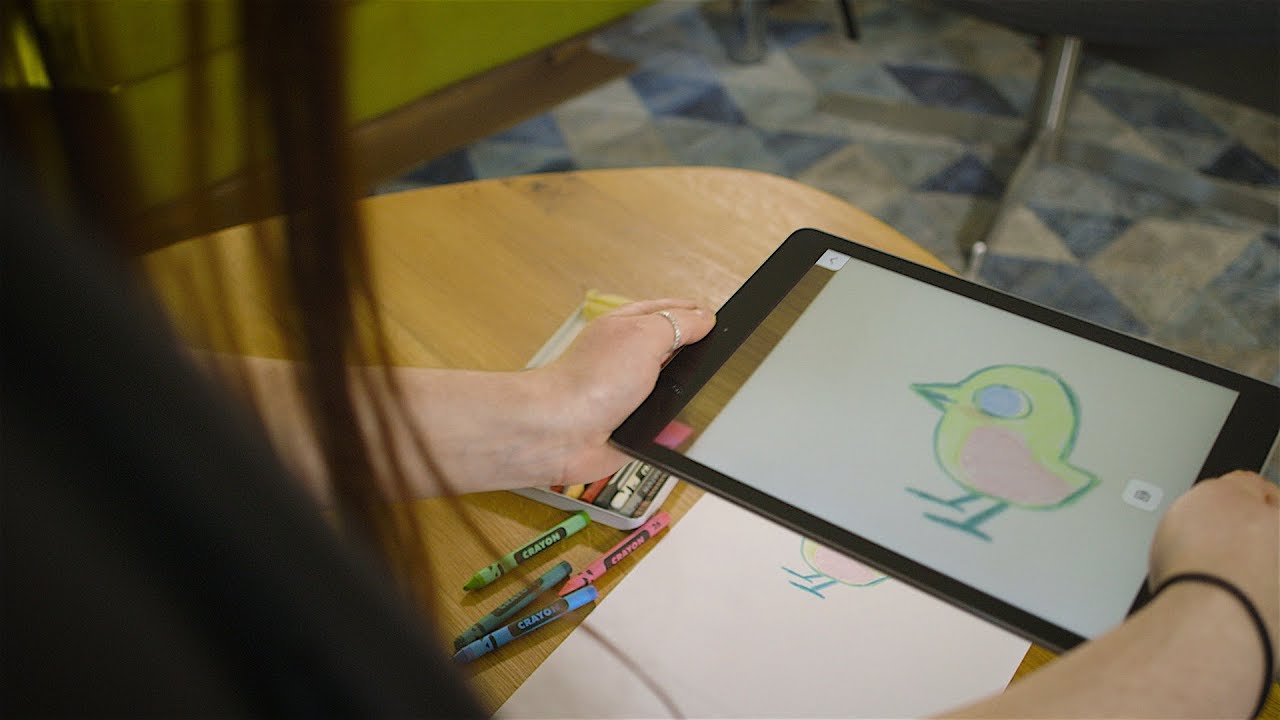
Effective with fluorine: although fluorine and chlorine in their gaseous form are poisonous, caustic and corrosive, they are indispensable as chemical precursors and even essential in their bound form (e.g. table salt). Some medical substances only become effective with the addition of fluorine. Cody Ross Pitts, Nico Santschi and Antonio Togni have developed a synthetic pathway that works without the problematic gases. The trick is in using solids that contain fluorine and chlorine.
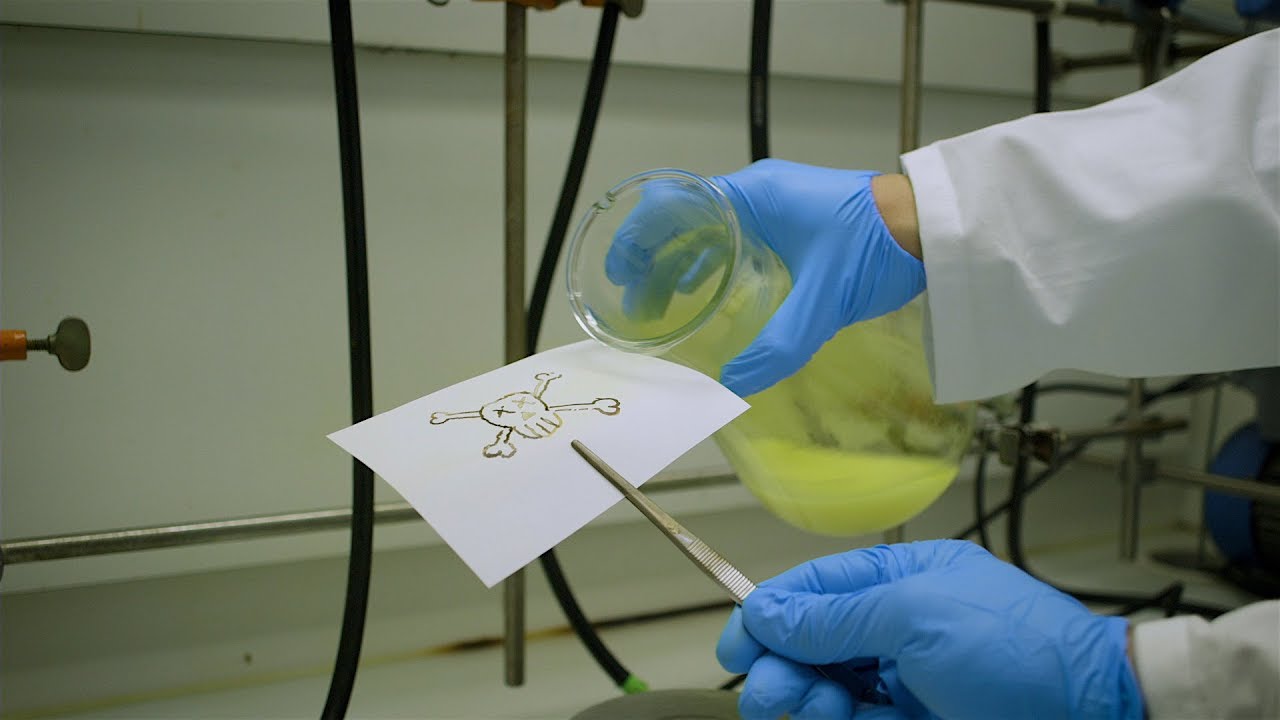
Clever signal encoding: telecommunication structures struggle to transmit ever-increasing volumes of data. To improve the efficiency of existing structures, Lukas Novotny and Shawn Divitt want to use the space between lines for transmission. The new coding technique allows six data streams to be transferred through four conventional transmission channels.
